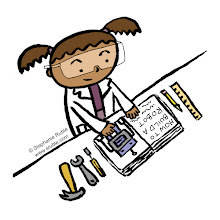Molly O’Neil (Editor at Katherine Teagan Books/HarperCollins):
- Questions she asks when evaluating a ms submission: Do I
love it as a reader? Am I fascinated by it as an editor? Can I see others
having a similar reaction? Who is this book for and who is going to love it
first? Do I have a specific vision for this book? Can I publish this
successfully? Is the timing for this book right?
- Some books have great questions or concepts, but other
aspects aren’t as strong. The whole book has to live up to the concept.
- Loves beautiful writing, but story, plot, and characters
need to be there too.
- The story needs to be respectful of the key moments of
being that age (whatever age the book is for).
- An agent is an advocate for the writer. An Editor is an
advocate for the reader.
- Need to find a balance between the universal and specific.
Readers are looking for themselves in the story.
- Resonance connects the story to readers so it lives and
stays with them. Even if they don’t remember the details, they remember how it
made them feel. It has to feel true to the reader.
- Write what you know emotionally. True emotions you have
known, no matter the type of story or setting.
- Plotting advice: Take a book you think does what you want
to do and outline it to see skeleton of what you think works.
Jennifer Besser (publisher at G.P. Putnam's Sons):
- Emotional investment on the part of the author comes
through in the writing.
- If you’re bored, we’re bored (the reader).
- If you’re not invested, we’re not invested (the reader).
- The power of observation: it’s the small details about the
character that say so much. (Example of small details: Ramona’s parents tell her to
leave for school at “quarter after eight” so she won’t be late. Ramona doesn’t
know what “quarter after eight” means. She reasons that a quarter is
twenty-five cents, so “quarter after eight” must mean eight twenty-five. She is
late for school.)
- The first book she signed up as a children’s book editor
was Percy Jackson.
- Penguin doesn’t have an acquisitions meeting. People still
have to sign off on books, but editors are allowed to build their own lists.
- It’s the story itself that matters, not the device that
children read it on.
- She made a list, when starting out, of the things she
wanted her books to have: 1. Adventure that’s out of the ordinary. 2.
Cliffhanger chapter endings. 3. Spunky characters (not necessarily fearless,
because that’s not real). 4. Characters she could think of as friends.
- Recommends making your own list of what you want your
books to be like. (Note: This was one of my favorite pieces of advice from the
conference, and something I intend to do!)
- She pictures her audience as kids who don’t/won’t read and
say they don’t like it. She asks questions that make that reader want to read
her books.
- Fail big if you have to, but go down trying! You have to
take risks with writing and publishing.
- The glass is half full of poison. (I really love this!
Will blog on Friday about it.)
- My job is to make incomprehensible books for illiterates.
(Text and art in PBs doesn’t make sense alone. Need them both for PBs to work.)
- He’s trying to make stories that are going to be read, “a
million-bazilliony times.” Craft needs to be strong to withstand multiple
readings.
- How to Write in 4 Easy Steps, 4 Kinda Harder Steps, and 1
Pretty Much Impossible Step … click here to see the list on his blog .
- Have better dreams because you will never reach your
dreams. The goal that makes him work harder is: “I dream that everything I
write will change the world for better.”
- The writing works when the writer is invisible.
- Read the very best books of the type you want to write,
then find the flaws. The flaws are where you can make your story better.
(Example: In FROG AND TOAD, which on is Frog? Which on is Toad? Nobody will
confuse Elephant and Piggie from his books.)
- The character is what makes the story, not the hook.
- No one knows what’s funny. Funny people only know what’s
not funny. Take away what’s not funny. What’s left is funny. If it’s not, start
over.
- Starts art in the middle of the book so the beginning and
ending have the best drawings. (Note: This was really interesting and made
sense to me. Going to have to try it!)
- Your job is to be some child’s best friend (you might be
their only friend – some kids don’t have good childhoods).




Generous and lovely post. I’m gobbling it all. Can you hear me chewing all the way from over there? Thanks. Stephanie.
ReplyDeleteConference notes are always good to nosh on. Nom, nom, nom. ;) Happy they're helpful!
DeleteIt’s too bad I did not know you were there I would of like to meet you face to face
ReplyDeleteIt's too bad we didn't bump into each other! Next time! Seems like at conferences there are tons of people you don't see, and others you run into all the time.
DeleteVert true
Delete